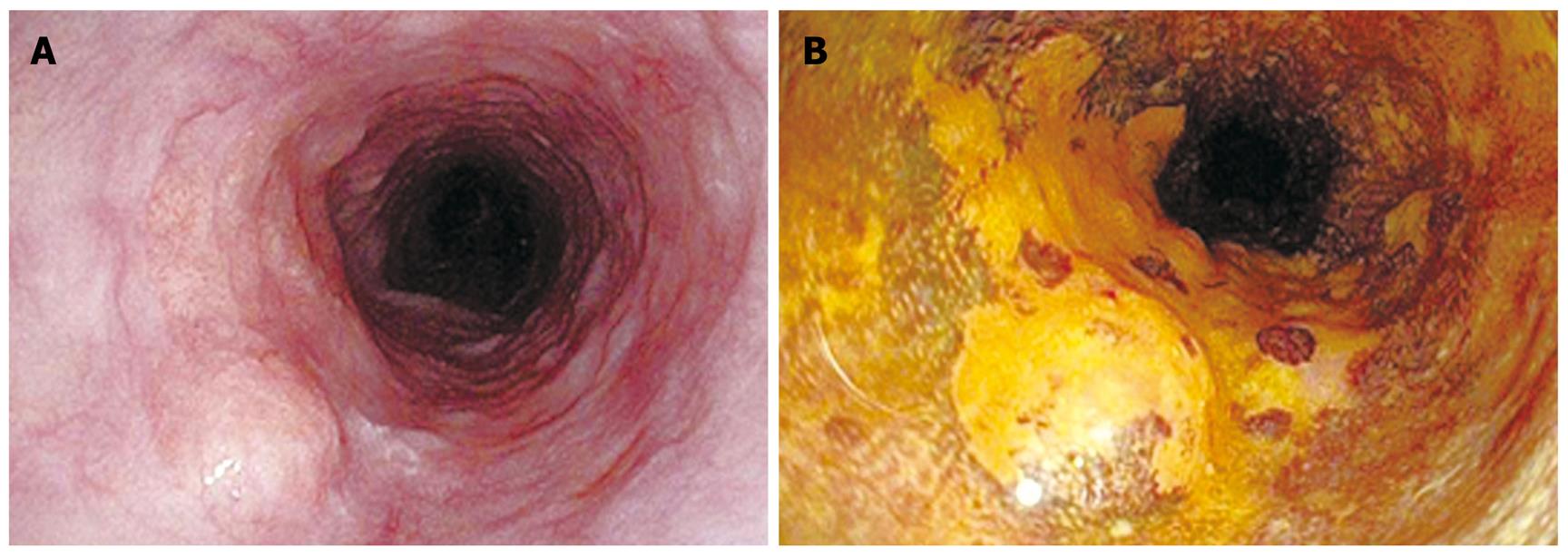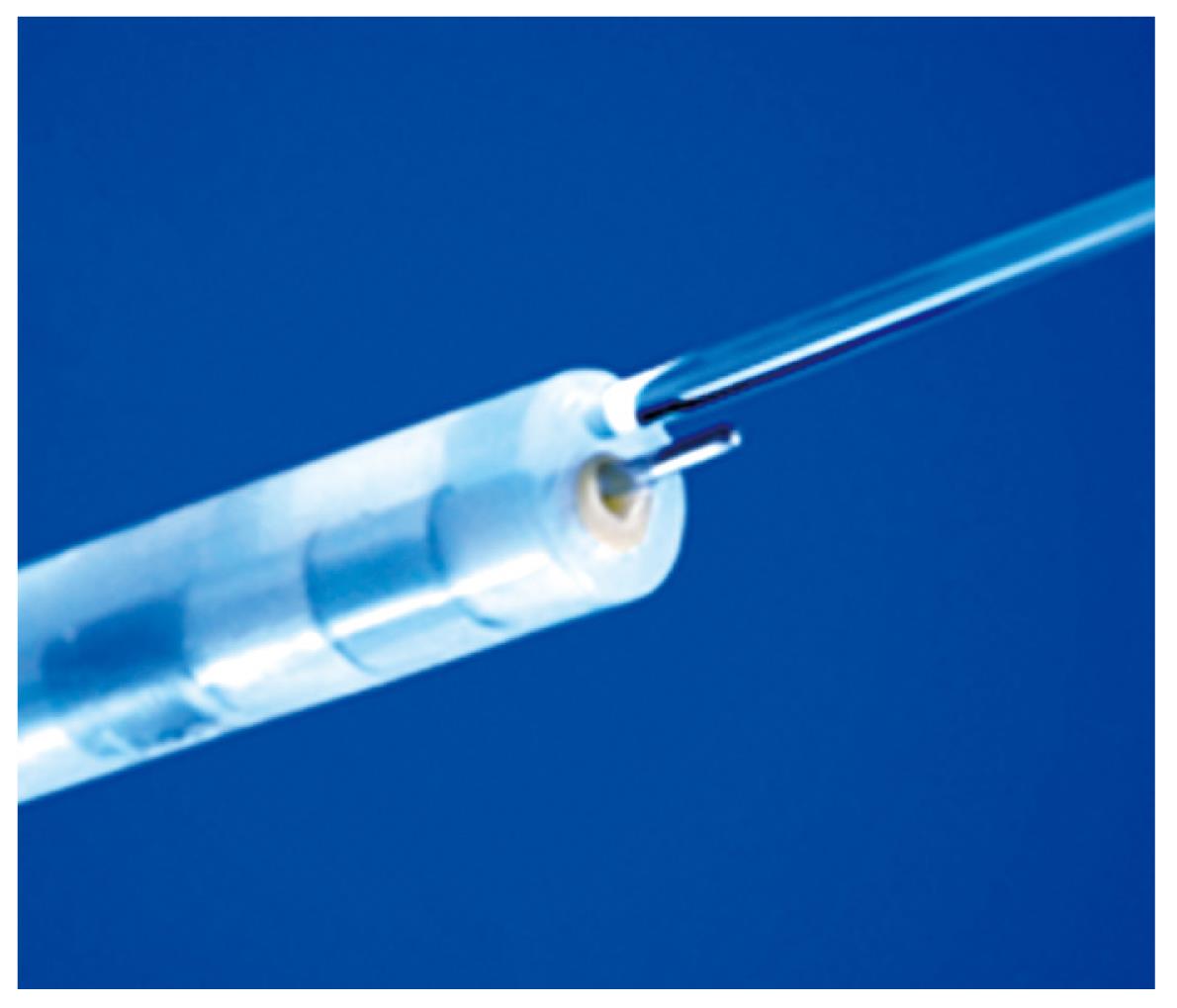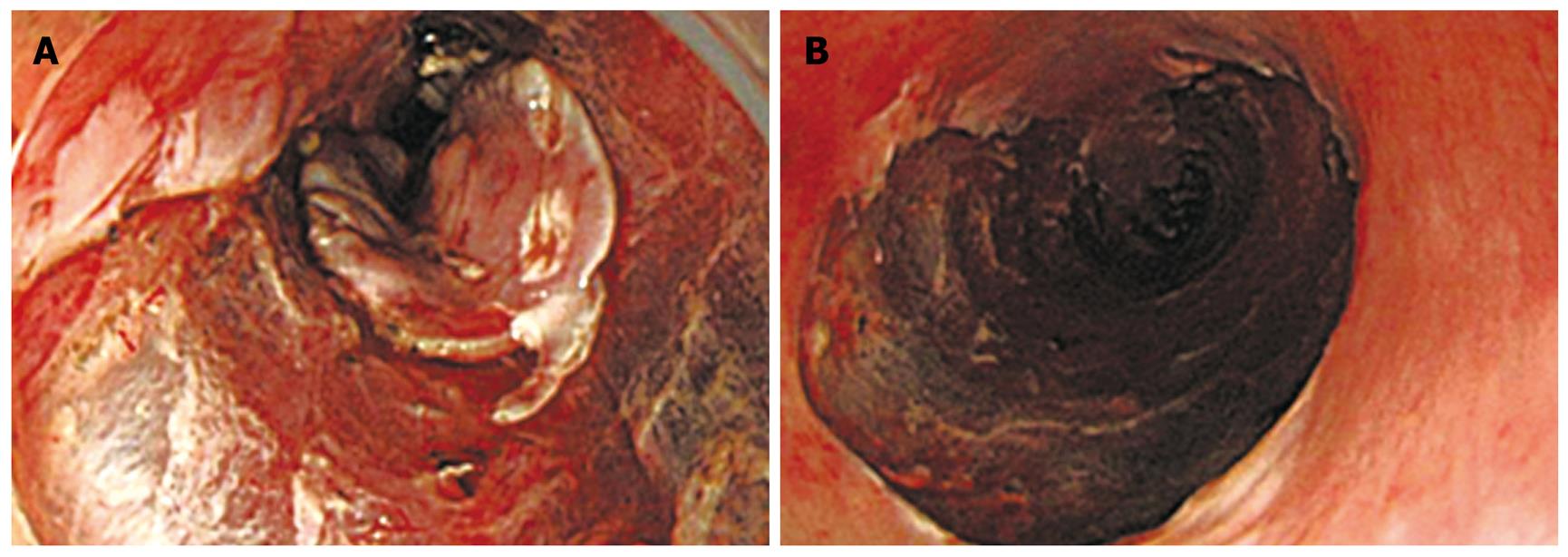Copyright
©2009 Baishideng.
World J Gastrointest Endosc. Oct 15, 2009; 1(1): 68-71
Published online Oct 15, 2009. doi: 10.4253/wjge.v1.i1.68
Published online Oct 15, 2009. doi: 10.4253/wjge.v1.i1.68
Figure 1 Esophageal tumor in the middle thoracic esophagus.
A: Conventional endoscopy; B: Chromoendoscopy with iodine staining.
Figure 2 Esophageal tumor in the middle thoracic esophagus by magnifying endoscopy with narrow band imaging.
A: Dilated and elongated intrapapillary capillary loops on the intraepithelial carcinoma; B: Dilated and elongated intrapapillary capillary loops on the submucosal tumor.
Figure 3 A hypoechoic tumor (4.
2 mm × 2.6 mm) in the muscularis mucosae covered by intraepithelial layer by endoscopic ultrasonography.
Figure 4 Splash-needle.
Figure 5 Esophageal endoscopic submucosal dissection.
A: During submucosal dissection. B: Mucosal defect after the procedure.
Figure 6 Resected specimen.
A: Macroscopic examination reveals a shallow depression, 34 mm × 26 mm in size in the center of the specimen, with a hard nodule, 5 mm in size, at the proximal edge of the depression; B: Histological examination reveals an intraepithelial esophageal carcinoma overlying a leiomyoma originating from the muscularis mucosae.
- Citation: Niimi K, Kodashima S, Ono S, Goto O, Yamamichi N, Fujishiro M. Curative ESD for intraepithelial esophageal carcinoma with leiomyoma mimicking submucosal invasive carcinoma. World J Gastrointest Endosc 2009; 1(1): 68-71
- URL: https://www.wjgnet.com/1948-5190/full/v1/i1/68.htm
- DOI: https://dx.doi.org/10.4253/wjge.v1.i1.68


















